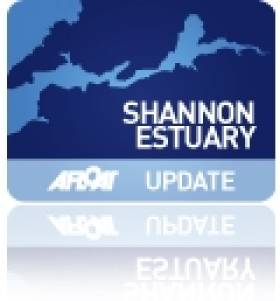Displaying items by tag: East Jetty Redevelopment
Foynes Port Redevelopment Continues With Dredging Operations
#EastJettyInfill – Work on a major €50 million investment of Foynes Port that began in February to transform the Shannon Estuary port into one of the biggest bulk harbours in Europe continues with dredging operations, writes Jehan Ashmore.
The restructuring work of Foynes Port sees the redevelopment of the East Jetty which forms phase one of the work costing €12.5m towards the in-filling of 3.45 acres.
When completed this new open quay storage area will cater for 40,000dwt vessels to berth alongside to load and will enable improved bulk cargo discharge times.
According to Shannon Foynes Port Company, the Notice to Mariners No. 2 of 2015 states that the Jenny T, a suction dredger/dump barge is anticipated to carry out dredging and associated dumping works for approximately two weeks, dependent on weather conditions.Operations will be restricted to daylight hours only.
At the neighbouring West Jetty, this forms phase two of the project as this stretch of the Co. Limerick Port will be connected with the East Jetty.
The expansion of the port will add an additional 35,000 square metres of additional bertage and create more open quay storage at the port.
SFPC also plan over time to be able to accommodate 80,000 tonnes capacity vessels, the world's largest cargo vessels to unload at Foynes, making it one of the few ports in Europe capable of handling these massive ships. Currently these vessels transit the Panama Canal.





























































